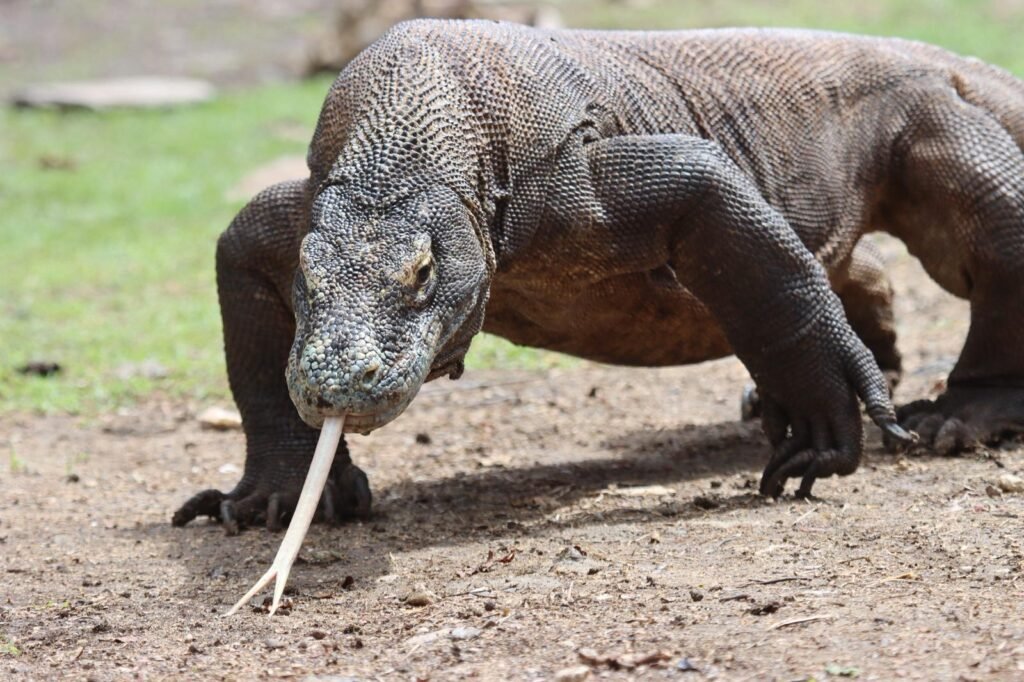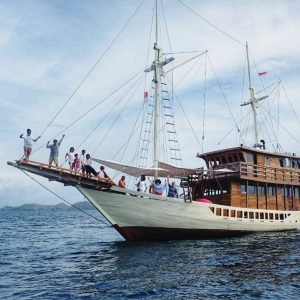Introduction to Komodo National Park
Komodo National Park, located within the archipelago of Indonesia, is renowned for its remarkable flora and fauna, most notably the Komodo dragon, which is the largest lizard species in the world. Established in 1980, this UNESCO World Heritage Site was initiated primarily to safeguard these magnificent creatures and their habitat. The park encompasses the islands of Komodo, Rinca, Padar, and several smaller ones, spanning over 1,733 square kilometers of land and sea, significantly contributing to the ecological richness of the region.
The park’s history is rooted in the need for conservation, as the Komodo dragon was endangered due to habitat destruction and poaching. The Indonesian government recognized the importance of preserving this unique species along with the diverse ecosystems it inhabited. This initiative led to the creation of Komodo National Park, which not only focuses on the dragons but also protects an array of other flora and fauna that thrive in various habitats, from savannahs to mangroves and coral reefs.
In addition to its role in conserving wildlife, Komodo National Park has gained prominence as a premier destination for eco-tourism. Travelers from all corners of the globe visit to witness the breathtaking landscapes and the unique biodiversity found within its boundaries. The park serves as a living laboratory where researchers study marine conservation and the effects of climate change on island ecosystems. Moreover, it plays a vital role in shaping the cultural identity of the local communities, particularly the indigenous peoples of Flores, who rely on the park’s resources while engaging in conservation efforts to preserve their heritage.
Overall, Komodo National Park stands as a testament to successful conservation work while providing insights into the delicate balance between human and wildlife interactions. Its global significance as a biodiversity hotspot underscores the importance of continued efforts in sustainable tourism and environmental stewardship.
Flora and Fauna of Komodo National Park
Komodo National Park, located in the Indonesian archipelago, is renowned for its rich biodiversity, hosting a remarkable array of flora and fauna. Home to the iconic Komodo dragon, the largest lizard on Earth, this park serves as a sanctuary for countless species, both terrestrial and marine. The unique ecosystem of the park boasts over 2,500 dragons, which are an apex predator within their habitat, playing a crucial role in maintaining ecological balance.
In addition to the famed Komodo dragons, the park is inhabited by numerous native birds, such as the orange-footed scrub fowl and the critically endangered Javan hawk-eagle. These avian species contribute to the vibrant tapestry of life, flourishing in the diverse landscapes that range from dry savannas to lush mangrove forests. Furthermore, the marine environment surrounding the park is equally impressive, featuring coral reefs teeming with various fish species, manta rays, and even the occasional whale shark, making it a prime destination for snorkeling and diving enthusiasts.
The flora of Komodo National Park is equally diverse, showcasing endemic plant species such as the Komodo dragon tree and various types of succulents that thrive in the arid climate. These plants not only support the local wildlife but also play an essential role in preserving the park’s ecological integrity. Conservation efforts spearheaded by park authorities aim to protect these endangered species and their habitats from threats such as tourism, poaching, and climate change.
The best spots for observing the rich wildlife include Rinca Island, where visitors can catch a glimpse of Komodo dragons in their natural habitat, and the picturesque Pink Beach, known for its vibrant marine life. As travelers venture through this stunning national park, they gain invaluable insight into the importance of conservation and the need to protect the remarkable biodiversity housed within its boundaries.
Activities and Adventures in Komodo National Park
Komodo National Park, a UNESCO World Heritage Site, offers an array of activities and adventures that cater to the diverse interests of its visitors. One of the most sought-after experiences is trekking to observe the iconic Komodo dragons in their natural habitat. Guided tours are available, providing tourists with valuable insights into the unique ecosystem and the behavior of these fascinating creatures. The standard trekking routes lead visitors through mesmerizing landscapes, including dramatic hills and sparse forests, offering breathtaking views along the way.
In addition to trekking, the park boasts some of the most vibrant snorkeling and diving spots in the world. The coral reefs surrounding Komodo National Park are teeming with marine life, making it an ideal location for underwater exploration. Snorkelers can expect to see colorful fish, sea turtles, and even manta rays. Divers have the opportunity to explore vibrant corals, underwater caves, and exciting drop-offs, highlighting the region’s rich biodiversity. To engage in these underwater activities, it is advisable to secure the necessary permits and consider participating in a guided tour to ensure safety and compliance with environmental regulations.
Aside from aquatic adventures, Komodo National Park offers other thrilling activities such as kayaking, birdwatching, and hiking through its rugged terrain. Each of these activities allows visitors to immerse themselves in the park’s natural beauty. It is recommended to visit during the dry season, which lasts from April to December, for the best experience. However, regardless of the season, it is crucial to practice environmental conservation. Tourists should adhere to safety guidelines, avoid littering, and remain respectful towards wildlife and their habitats to ensure the park remains pristine for future generations.
Cultural Heritage and Local Communities
Komodo National Park, while renowned for its biodiversity, is also home to rich cultural heritage and vibrant local communities that have developed unique traditions over centuries. The people inhabiting this region, primarily the Komodo and Flores communities, have a deep-rooted connection with their environment, often deriving their livelihoods from fishing, farming, and small-scale tourism. These activities not only sustain their families but also bolster the local economy, creating an integral relationship between the communities and the natural elements surrounding them.
The cultural aspects of these communities are reflected in their festivals, rituals, and everyday practices. Traditional ceremonies, often centered around the cycles of nature, underscore the people’s respect for the land and sea. Local artisans produce crafts that highlight their cultural identity while also serving as a source of income through eco-tourism markets. This balance between preserving tradition and engaging with modern economic opportunities exhibits their adaptability in an evolving landscape. The flourishing of eco-tourism in Komodo National Park has provided these communities with a platform to showcase their heritage while promoting sustainable interactions with their environment.
Furthermore, community involvement in conservation initiatives has become increasingly vital in preserving the delicate ecosystems within the park. Local people often participate in programs aimed at protecting wildlife, such as the endangered Komodo dragon. This collaborative effort not only fosters a sense of ownership among residents but also emphasizes the importance of sustainable tourism practices that benefit both the local population and the park’s natural resources. Initiatives that teach locals about environmental conservation and provide opportunities for responsible tourism are helping to ensure that their cultural identity remains intact amidst external influences and changing dynamics.
In conclusion, the cultural heritage and the practices of local communities around Komodo National Park play a significant role in the region’s identity. Their harmonious relationship with the environment supports sustainable tourism, contributing to both the preservation of their traditions and the protection of the park’s invaluable ecosystems.





